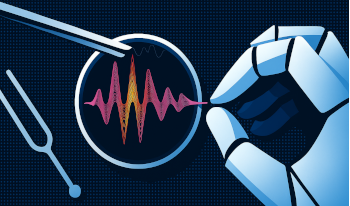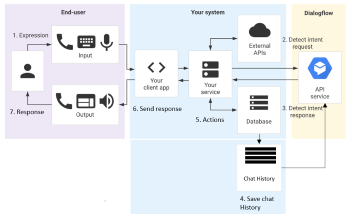
Rapid advances in imaging technology, particularly in the areas of visual effects (VFX) and 360-degree video technology, have the potential to transform the meetings, incentives, conventions and exhibitions (MICE) industry. Technological innovations such as Virtual Reality (VR), Augmented Reality (AR) and Extended Reality (XR) play a crucial role in the development of immersive environments designed to increase attendee engagement and satisfaction. This study examines the implementation of VFX and 360-degree video technologies through interactive digital posters as part of experience trails in the Lüneburg Heath, a well-established leisure region in northern Germany. This paper presents the technological framework and discusses usability in the context of this case study. The use of 360-degree panoramic video and VFX for interactive posters in specially equipped conference rooms, such as the Dortmund conference room at Hotel Park Soltau (Germany), illustrates the potential of these technologies to redefine traditional business event settings. The integration of these technologies offers new opportunities, particularly in using the environment to enhance the event experience and create unique value propositions in an increasingly competitive market. By merging business and leisure elements, the Lüneburg Heath serves as a strategic asset for MICE stakeholders, allowing venues to offer differentiated experiences in line with global trends such as 'bleisure' (business and leisure) travel. While these technologies offer opportunities, challenges such as high initial costs, specialised content production and adaptation to existing event formats need to be addressed. In addition, the study considers the potential of LED walls as a scalable alternative and provides insights into future developments in the implementation of immersive technologies in business events.

Computer Vision has become increasingly important in smart farming applications, including scheduling crop irrigation. A combination of various remote sensing devices enables continuous monitoring of a crop and non-destructive prediction of irrigation time. Appropriately scheduled and precisely targeted irrigation enables sustainable use of this limited resource. In agriculture, absorption-based and thermal-based imagery are used to monitor plant conditions through indices such as the Normalized Difference Water Index (NDWI) and Crop Water Stress Index (CWSI). This paper provides an overview of the concept and components of monitoring systems for automated irrigation scheduling. It explains the potential and limitations of applying computer vision-based systems for plant stress detection, providing insights to advance understanding in this growing field.

In this paper, we present a method that analyzes an audio stream in real time and provides an indication of whether the voice is synthetic generated by a voice clone or a text to speech model. Unlike state-of-the-art techniques that rely on self-supervised (SSL) or non-self-supervised learning, this method is deterministic and focuses on the analysis of tonal and non-tonal components within an audio stream. By leveraging principles from the MPEG-1 global masking threshold, the algorithm systematically evaluates tonal and noise components within a defined frequency range. The underlying hypothesis is that synthesized audio exhibits distinct tonal and non-tonal characteristics compared to original human speech, which can be quantified for classification. This interpretable, deterministic framework addresses key limitations of existing SSL-based approaches, including high computational costs and limited transparency. Beyond detecting synthesized speech, the method provides insights into the likely model used for generation. Experimental evaluations demonstrate the algorithm’s effectiveness, revealing distinct and consistent patterns across various TTS and voice conversion (VC) models, thereby offering a reliable and computationally efficient solution for audio authenticity verification. The proposed algorithm is developed and tested on a small dataset and show an excellent separation between different solution providers and genuine voices.

The main objective of this paper is to understand what and how deploying a digital voting system in a democratic country would look and what challenges a potential architect of such a system might confront. The study will also focus on using blockchain to solve specific barriers that might appear in the quest for a digitized voting system. By exploring the confluence of technology and democracy, this research underscores the importance of technological innovation in democratic participation and governance. This paper will cover the fundamentals of blockchain, its integration within electronic voting systems, examination of its technical attributes, societal impacts, regulatory compliance, and a proposed blockchain-based e-voting system. Certain features of blockchain present a promising solution to longstanding challenges in electronic voting systems, such as ensuring security, integrity, compliance, and public trust. The initial sections of the paper provide an in-depth analysis of blockchain’s theoretical basis, emphasizing how its unique attributes can safeguard the electoral process against fraud and manipulation. Even more so, security techniques like cryptography and consensus mechanisms are also studied in this section. Following this inquiry, the study investigates the societal implications of deploying an e-voting system in a democracy, drawing insights from the experiences of various European countries. This exploration reveals the critical role of societal acceptance, efficient technical solutions, and legal frameworks in successfully implementing new voting methods. Next, the design phase articulates a viable system architecture that balances several components: efficiency, control, security, and transparency. The suggested architecture considers critical factors such as voter anonymity, vote integrity, and the unique ability to modify votes within the voting period while aligning with democratic principles and regulatory standards. In summary, this paper presents a complete analysis of digital voting, including technical and societal considerations, steps to deploy such a system in a democratic country, and, more importantly, blockchain technology’s potential to revolutionize it further. Integrating theoretical knowledge, societal insights, and practical design considerations offers a blueprint or framework for future advancements in creating digital democracies.

This research investigates the cybersecurity awareness of young adults aged 18 to 27 through a structured survey. It evaluates key areas such as phishing recognition, two-factor authentication usage, data backup practices, and knowledge of encryption. The findings indicate that while many participants actively use two-factor authentication, there are notable gaps in understanding encryption and managing privacy settings. Differences in awareness were observed between age groups, with younger individuals displaying lower confidence in technical skills. The results highlight the importance of targeted educational programs to address these knowledge gaps and enhance online safety practices. These initiatives are essential to help young adults strengthen their cybersecurity defenses and protect their personal information in an increasingly digital world. The study underscores the continuous need for education to stay ahead of evolving cyber threats.

Tracking and identifying stolen cultural artifacts on online marketplaces is a daunting task that has to be accomplished through manual search. In this paper, an automated monitoring tool is developed to track and identify stolen cultural goods on targeted online sales platforms. In case of theft, the original owner can upload descriptive keywords and photos of the stolen objects to start monitoring tasks to track and identify the stolen objects on targeted online marketplaces and get alerted when identical or highly similar objects appear on the monitored sales platforms. The technical challenges posed by automated monitoring are addressed by proposed advanced crawling and image feature extraction and matching solutions. With the support of proposed novel techniques, the developed monitoring tool can efficiently and effectively monitor stolen artifacts on online marketplaces, significantly reducing the manual inspection effort.

Microgrid systems encounter various challenges, including critical issues such as load scheduling and the generation of large amounts of data that need to be monitored to stabilize the system during operation. It is essential to ensure the real-time collection and protection of data throughout the process. In this context, infrastructure such as cloud computing and data security plays a crucial role in addressing these challenges. Data generated from a microgrid includes different attributes such as meteorological information, energy production data, and distributed energy resources data, which help monitor the balance between supply and demand. This data also plays a crucial role in energy forecasting, predictive maintenance, and analyzing the critical performance of grid-connected or standalone microgrid systems. The paper discusses the significance of the data collected from distributed energy resources and provides a critical analysis of current solutions and future perspectives on data sharing in microgrids and their challenges.

The contribution of renewable energy system in terms of climate change plays a vital roles and the energy scarcity in rural areas are the major concern nowadays. Countries where the grid are not stable and has severe load shedding are the common place to integrate the environmental friendly energy system. Microgird is one of the solution to mitgate such problems either for standalone or grid connected systems. In this research the overview of Microgrid systems are discussed. The propblems and challanges are investigated. The control mechanism of them are discussed and how energy management systems can reduce the associates problems related to microgrids are proposes and critically analysed. In this work, a dispatch strategy has been demonstrated to ensure that the system can reduce the use of diesel generators and increase the utilization of renewable energy sources. The strategy also decreases the excess electricity produced by the system while ensuring its technical feasibility. The system was simulated with and without storage; the results indicate that the version without a battery is more economically and technically feasible while still meeting the necessary constraints.

Urban governance is vital for efficiently managing cities, promoting sustainable development, and improving quality of life for residents. In the realm of urban governance, the San Antonio Research Partnership Portal stands as a groundbreaking initiative, fostering collaboration between diverse city entities and leveraging innovative smart applications. In this paper, we will focus on its ability to facilitate strategic alignment among city departments, public feedback integration, and streamlined collaboration with academic institutions. Through technical insights and real-world case studies, this paper underscores the portal’s role in enhancing municipal responsiveness, improving decision-making processes, and exemplifying the potential of smart applications utilizing artificial intelligence for fostering effective city management and community engagement.

Today the use of chatbots has proliferated across various sectors and applications, significantly enhancing customer interaction and satisfaction through real-time communication. However, there remains a critical need to explore further advancements in their development. With the progress in Natural Language Processing (NLP) and Natural Language Understanding (NLU), several major platforms—such as Google, Amazon, and IBM—have introduced a variety of tools and features for chatbot creation. In this paper, we will conduct a comparative analysis of representative chatbot development platforms, and provide some extension capabilities in the context of time-persistent(deep-logic) chatbot capabilities. All the state-of-the-art task-oriented chatbot platforms focus on facilitating connection to multiple messaging channels such as Facebook Messenger, Instagram, WhatsApp, Slack and SMS. They provide user-friendly interfaces for chatbot creation and automation. Still, the operation of long conversations, often referred to as deep-logic, brings additional challenges that are not typically addresses by many existing systems. The paper aims to provide insights into the strengths and limitations of each platform, ultimately contributing to the ongoing development of more effective and intelligent chatbots.